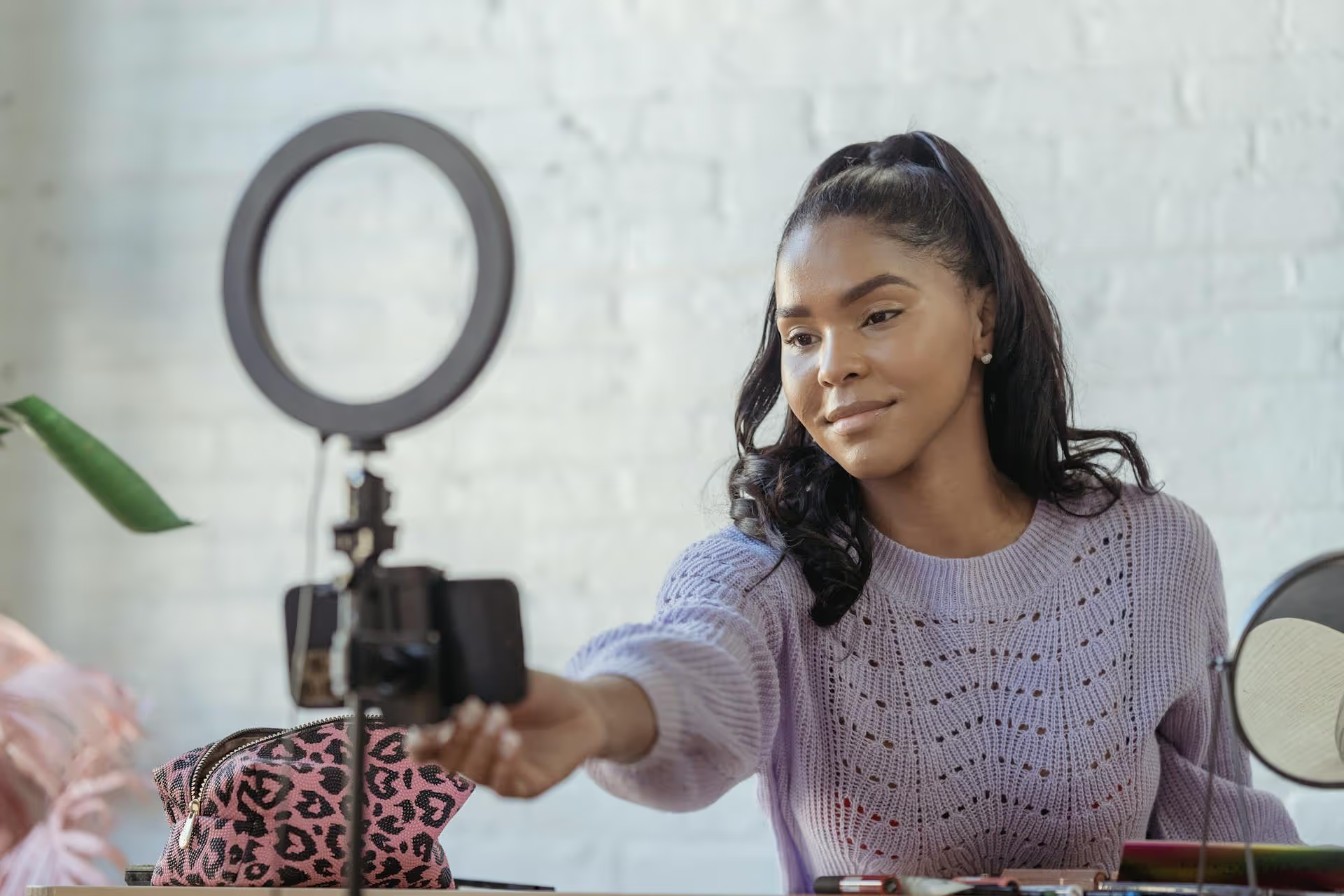How to Add Social Media Icons to an Email Signature
Enhance your email signature by adding social media icons. Discover step-by-step instructions to turn every email into a powerful marketing tool.

That incredible TikTok you meticulously edited - the captions, the cuts, the perfect sound timing - is sitting in your drafts on your old phone, and now you can't get it onto your new one. You’ve come to the right place. This guide will walk you through the real methods for moving your TikTok drafts between devices and explain why it's not as straightforward as you'd think.
Let's get the bad news out of the way. There is no official "transfer drafts" button on TikTok that syncs your unfinished videos between devices. The reason is simple: your drafts are stored locally on your phone's internal memory, not in the cloud on TikTok's servers.
When you create a draft, TikTok saves all the video clips, edits, text overlays, and effect choices in a folder inside the app’s data on that specific device. It's not attached to your account in the same way your published videos are. So, when you log into your TikTok account on a new phone, the app can pull your profile and public videos from its servers, but it has no way of knowing about the drafts saved on your old device.
This is a pain, but it's done for a reason. Original video files are large, and syncing countless drafts from millions of users to the cloud would require a tremendous amount of server space and bandwidth. Storing them locally is more efficient for TikTok, but less convenient for creators switching phones.
Understanding this limitation is the first step. Now, let's explore the workarounds that actually get the job done.
This is the most common and direct method for getting a draft from one phone to another. You're essentially finalizing the video on your old phone, transferring that finished video file, and then re-uploading it as a new post on your new device. It’s simple, but it comes with a major catch.
When you save your draft, TikTok "bakes in" all your edits. The text overlays, stickers, transitions, and sounds are now a permanent part of the video file. You cannot go back and edit the timing of individual clips, change the text, or adjust the effects. The saved video is a single, flat clip. This method works well if your draft was completely finished, but if you wanted to make more edits on your new phone, you’ll be disappointed.
If Method 1 feels too restrictive and you need the ability to fine-tune your edits on your new device, this "deconstruction and reconstruction" approach is for you. It requires more effort upfront but gives you complete flexibility. The goal is to move the raw building blocks - your original video clips - and a "recipe" for your edits.
Yes, this method is more time-consuming. But the payoff is a perfectly replicated draft on your new device with every element fully editable. It's the professional's choice for complex edits that need to be perfected before posting.
You might find articles or videos online promising a shortcut - a third-party app or a technical trick involving hidden device folders that claims to transfer your drafts directly. Steer clear of these methods.
Messing with TikTok's internal file system can corrupt your app data or cause crashes. Even worse, downloading unofficial "transfer tools" from unknown sources is a huge security risk that could expose your phone to malware or compromise your TikTok account credentials. Sticking to the two methods above is the only safe and reliable way to transfer your content.
The best way to handle drafts is to minimize your reliance on TikTok's draft system in the first place, especially if you manage multiple accounts or work in a team.
Adopt a "video-first" workflow:
This approach makes your core video assets device-independent. If you get a new phone, all your "drafts" are simply finished videos in your camera roll, easily transferable and ready to be uploaded to any platform, not just TikTok.
While you can't sync TikTok drafts between phones with a single click, you have reliable workarounds. For a quick transfer, save your finished draft as a video and re-upload it, but for full editing control, you'll need to transfer the raw clips and recreate the edit on your new device. Both methods can get your content where it needs to go.
Creating platform-specific content is important, but dealing with device-specific drafts adds unnecessary friction to any social media workflow. We know how this chaos can derail a content schedule, which is why we designed Postbase to be built for video from the ground up. You simply upload your finished video once and can schedule it natively across TikTok, Instagram Reels, and YouTube Shorts from one central calendar, keeping your content flowing without being tethered to a single phone.
Enhance your email signature by adding social media icons. Discover step-by-step instructions to turn every email into a powerful marketing tool.
Learn how to add your Etsy link to Pinterest and drive traffic to your shop. Discover strategies to create converting pins and turn browsers into customers.
Grant access to your Facebook Business Manager securely. Follow our step-by-step guide to add users and assign permissions without sharing your password.
Record clear audio for Instagram Reels with this guide. Learn actionable steps to create professional-sounding audio, using just your phone or upgraded gear.
Add translations to Instagram posts and connect globally. Learn manual techniques and discover Instagram's automatic translation features in this guide.
Optimize your Facebook Business Page for growth and sales with strategic tweaks. Learn to engage your community, create captivating content, and refine strategies.
Wrestling with social media? It doesn’t have to be this hard. Plan your content, schedule posts, respond to comments, and analyze performance — all in one simple, easy-to-use tool.